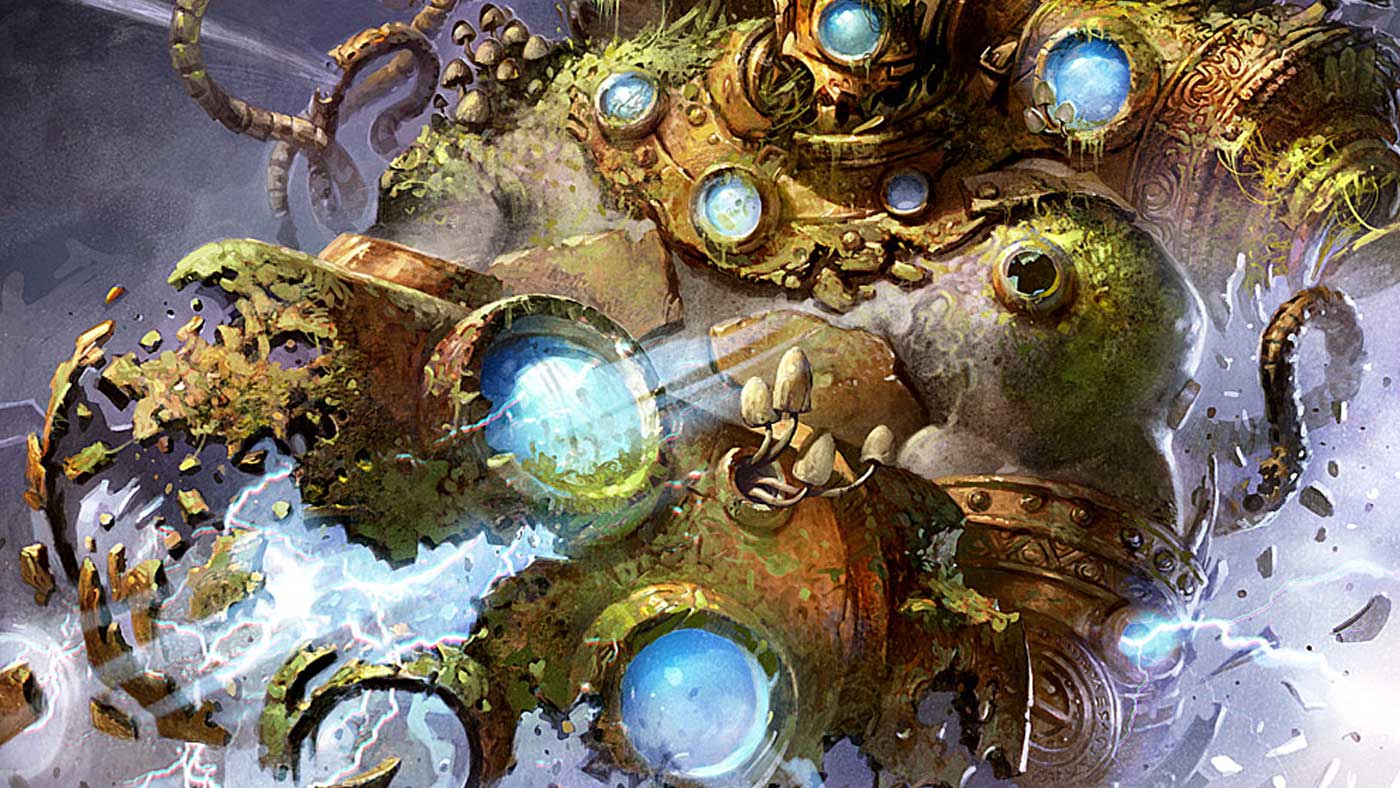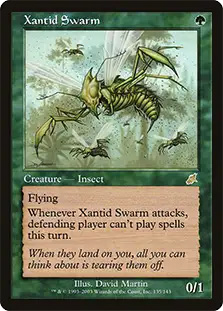It is no secret that Miracles is not only a tricky match-up for The Epic Storm, but is also one of the best decks in the format. On top of that, it is not exactly the easiest match-up to navigate even when you have all of the right pieces. While it would require more than a single article to teach you all of the tips and tricks necessary to beat Miracles, I figure that I can pass on some of the wisdom that has allowed me to maintain a positive record against Miracles in premier events. Keep in mind, so much of this is situational, and no two games are the same, but in general, these are the things that I look for when I feel like I might be behind and the line is not so obvious.
Game 1:
This is definitely the hardest game of the match-up in most cases, especially if your opponent has an inkling that their hand of two Swords to Plowshares might not cut it
(a real concern for the Bryant Cooks of the world). While they get to board in some tools in the match-up, the cards we gain are much more valuable. The key in game one is to end it as quickly as possible.
Sensei's Divining Top will bury you as time goes on
(what else is new) and you will have a rough time beating even blind
Counterbalance flips with a lot of hands. Try to aggressively fire off your discard spells to grab the counter-magic and then combo off. Even if you aren't entirely sure the coast is clear, you often need to aggressively take chances. Sitting there and waiting until you can clear the weeds will only make it harder to poke your head out.
In general,
Empty the Warrens is not where you want to be in the match-up. It definitely plays a role and I've won some important matches against the best Miracles players with it, but most often it is weak with any number of Goblins less than their life total. In game one however, you rarely have a choice. If you have a chance to make 12 Goblin tokens on turn two against a
Sensei's Divining Top and your hand needs quite a bit before it can do anything better than that, just push and pray. They'll see a lot of cards and
Brainstorm with
Terminus will just kill you, but your chances still aren't miserable. Very basic math gives us an estimate that if they have 52 cards in library with 4
Terminus, and can activate a top, then draw for turn and activate Top two more times with fetches before each, they are a little bit over 50% to find it. Having a slightly below 50% chance at winning a game that is otherwise pretty difficult to win is not the worst equity I've ever seen. Of course, that doesn't include the fact they could have
Brainstorm with
Terminus but on the other side of the token, it does require them to have quite a few things to see that many cards.
One last thing to remember that often gets overlooked:
Ad Nauseam is an instant. When games go longer and you are making land drops, don't be afraid to just jam an
Ad Nauseam on their end step so that if it gets countered, we get our lands back untapped on our turn!
Sideboarding and Post-Board Games:
The general concept post-board is that you are expecting the games to go long. They'll be bringing in even more cheap counter-spells like
Flusterstorm, so winning anytime after turn one is not easy. With
Monastery Mentor starting to become the norm, our life total is starting to be pressured a bit more, but often times they will only lead with early
Monastery Mentors with very specific hands. Tapping out on turn three can be scary for them when we can just fire off a discard spell for their
Force of Will or an
Abrupt Decay for their
Counterbalance and then win the game. Sure, it is never going to be easy when they play turn one
Sensei's Divining Top, turn two
Counterbalance, turn three
Monastery Mentor with a
Force of Will backup, but we aren't winning too many of those games anyway, so let's not focus too much on those corner-case situations.
This match-up has three main components when sideboarding: the counter-magic in hand, the
Counterbalances in play, and the
Sensei's Divining Top floating counter-magic on top of their library.
Abrupt Decay and
Xantid Swarm are our real game players. They do wonders against the
Sensei's Divining Top strategy, as
Abrupt Decay can force them to use the top on their end step to draw the counter-spell that we can then snipe with a discard spell, and
Xantid Swarm needs no explanation. This isn't 2014 anymore though. People actually leave in a few Swords to Plowshares to answer
Xantid Swarm, so sticking one into play doesn't give us the free wins that it often used to, but it is still a powerful card in a ton of situations and often times requires an answer when it is backed up by
Abrupt Decay.
Discard spells are good in this match-up, but they also won't do everything you want them to. They do very little against
Counterbalance at most points in the game, and they don't do enough against "Top" floating. Additionally, they play enough counter-spells that trying to just fire one off way before you can combo off will leave you in many awkward situations. Discard spells are best on turn one to grab either
Sensei's Divining Top or
Counterbalance, and then on turn 20 when you have finally answered their
Counterbalance and are trying to actually win the game. In that second scenario, we have more than enough time to find one of the few. In addition to all of that, discard spells act as great utility in our sideboard since they can give
Burning Wish more action when you start getting tutor-flooded late in the game.
The one last things to consider are the roles that
Past in Flames and
Tendrils of Agony play in the game. Remember when I said that the games often go quite long? As a result of that, you quite frequently end up with a ton of mana between all of the land drops you make, and all of the mana-producing effects that you draw in the process of sculpting your hand. When you reach the point where you try to start powering through all of their counter-spells,
Past in Flames is great because it serves as two chances over a few turns thanks to Flashback.
Tendrils of Agony is also great because as you start running your tutors into counter-spells, it is pretty easy to reach a high storm count, and then your only fear is a
Flusterstorm.
Putting all of this information together, let's talk about some traditional sideboarding knowledge. First of all, we want to bring in all of the
Xantid Swarms and
Abrupt Decays that we have. If the extra land is in the sideboard, bring that one in as well. If we are playing more than one
Past in Flames, bring that in. We want at least one still in the board though so that our
Burning Wishes do more things. We can board in the
Tendrils of Agony as well. I've always been a fan of swapping the
Empty the Warrens for it. That makes it so we have more game against
Meddling Mage and
Surgical Extraction on our
Burning Wishes, and also allows us to more easily play to the situation I described above.
Something to also realize is that when we start aggressively jamming tutors, unless we have mana to waste on
Infernal Tutor for a second
Burning Wish, we are often going to be running out our
Burning Wishes first since
Infernal Tutor requires us to discard our hand. That means that
Infernal Tutor is the most likely to resolve, and we don't always want to require the two extra mana that is necessary to
Infernal Tutor for
Burning Wish for
Tendrils of Agony.
Lastly, if we have any
Thoughtseizes in our sideboard, they are generally a bit better than the other discard spells we have in our deck, so we can board in one or both.
As far as what we are taking out, let's first get these
Chrome Moxen out of our deck. The games go long, and
Chrome Mox is just a miserable way to try and make mana in a longer game seeing as it creates a card disadvantage, and our
Ad Nauseams rarely need the help. We can also consider taking out the Swamp. I've never been the biggest fan of taking it out, as I really just want to make as many land drops as I can, but we aren't going to get Wasteland-ed and we have enough time to draw the rest of our lands anyway, so take it out if you need the room. Some number of
Ponders can be expelled from our deck, since the games go long enough that the sculpting from
Ponder isn't all that required.
Brainstorm is just a much better sculpting card in long games. If you boarded in the
Tendrils of Agony, get
Empty the Warrens out of your deck. It is pretty miserable and only dilutes our draw steps and
Ad Nauseams. If you boarded in the
Thoughtseizes, I like shaving a
Cabal Therapy or two. It allows our
Burning Wishes to have more utility and is otherwise somewhat lackluster because, without
Gitaxian Probe, it is hard to predict exactly what cards they have since they have so many cards that are good against us. Late game, it is good at picking off multiple copies of
Force of Will that they have been hoarding though, so it does do something right. Lastly, if you still need cards to cut, you can try shaving a Lotus Petal for many of the same reasons that we take out
Chrome Mox.
I've sort of said it all during sideboarding, but let me add some additional notes about actually playing the post-board games. Since the games will most often go long, don't be afraid to use an
Abrupt Decay on a
Monastery Mentor or
Vendilion Clique to buy yourself some time. Once you are getting close to feeling like you have them in your reigns, start just jamming
Burning Wishes to eat counter-spells. If they resolve, you can either find discard spells or some easy action spells like
Dark Petition and
Past in Flames. Most often, they won't let them resolve since they are worried about you just finding a
Tendrils of Agony or, if they are not as experienced, they just know to counter the tutors despite not exactly knowing what you might find with them.
Don't just assume you should use your
Abrupt Decays on the
Counterbalances immediately. They have more value options as time goes on, and if you are
Abrupt Decay light, it is possible that they just jam a second
Counterbalance and you don't have an answer. Alternatively, if you wait, I've noticed that many less experienced Miracles players tend to hold the second
Counterbalance until they lose the first one, as they would rather just have the extra
Sensei's Divining Top mana. That being said, if you have spells you want to start resolving like
Burning Wish or
Brainstorm, just fire it off.
On the actual combo turns, be sure to plan out your exact line in advance. This is something you should begin planning on turns prior, but once it is time to go, make sure you have a plan for them countering any part of the combo. It is okay for that plan to be "lose" if it is a spell they are unlikely to counter
(the second Rite of Flame or something when you have a ton of lands in play), but just try to minimize the existence of those points and really sell it when the time comes. You don't always have to cast every mana source in one turn. A lot of lines result in you wanting to just use on or two on this turn, then checking if the
Burning Wish resolves before deciding whether to follow up with more or just wait.
That is all of the information that I have for you today. There is a lot here to digest, so if you feel like you need a bit more edge in the Miracles match-up, really take the time to read everything over and understand it well. As I said at the beginning, this is certainly not everything! If you have any questions about other parts of the match-up, feel free to let me know. Additionally, if you liked this article and would like this type of analysis for other match-ups, let me know what you are looking for and I will try to deliver!
Thanks for reading, and good luck! I hope to see you at GP Louisville next January.
- AJ Kerrigan



















